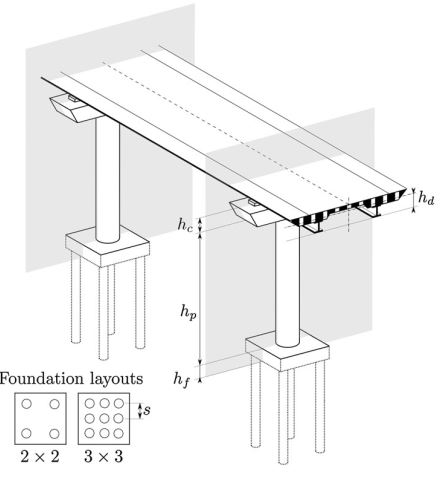Últimas investigaciones:
Proyecto de investigación co-edu: Competencias transversales desde la EIIC para su ecosistema social11 Dic 2022
Carreteras sostenibles con geomateriales volcánicos
28 Jul 2022
Competencias transversales desde la EIIC para su ecosistema social
1 Jun 2022
Benefits of inclined pile foundations in earthquake resistant design of bridges
30 Dic 2019
Groundwater Quality Assessment in a Volcanic Mountain Range (South of Gran Canaria Island, Spain)
11 Abr 2019
Ir a investigación

15 Oct 2018
Seismic response of bridge piers on pile groups for different soil damping models and lumped parameter representations of the foundation
Summary
This paper presents a wide parametric study aimed at elucidating the influence, on the computed seismic response of bridge piers, of two related aspects of the model: (1) the adoption of the classical hysteretic or the causal Biot's damping models for the soil and (2) the use of two different lumped parameter models of different complexity and accuracy to approximate the impedances of the pile foundation. A total of 2072 cases, including different superstructures, pile foundations, soil deposits, and seismic input signals, are studied. The results arepresented so that the influence of the different parameters involved in the analysis can be assessed. From an engineering point of view, both lumped parameter
models provide, in general, sufficiently low errors. The choice of the most adequate model for each case will depend not only on the configuration of the structure and the soil-foundation system but also on the assumed soil damping model, whose influence on the computed seismic responses is relevant in many cases. The nonphysical behaviour provided by the classical hysteretic damping model for the soil at zero frequency generates issues in the process of fitting the impedance functions. It is also found that larger deck displacements are predicted by Biot's model due to the higher damping at low frequencies provided by the classical hysteretic damping model.